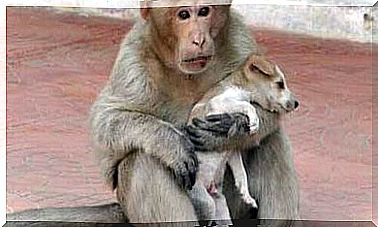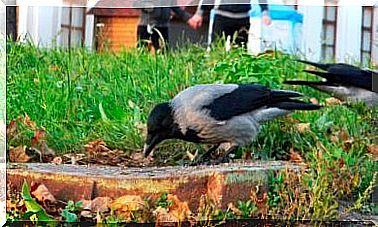Can An Elderly Dog have Gray Fur?
An elderly dog may have gray fur and this is a normal symptom of aging. However, when small white hairs appear early in young dogs, it can be a cause for concern.
Next, we’ll look at what gray hairs are and when their development can be a warning sign.
Why does an elderly dog have gray fur?
Gray hair originates from the loss of pigmentation in the hair. The white or gray tone – in some cases – characteristic of gray hairs, is a consequence of the decreased concentration of melanin. This substance is responsible, among other functions, for the tone of the skin and hair.
When the dog ages, the production of an enzyme called MSR, responsible for neutralizing hydrogen peroxide, decreases. This is a common phenomenon associated with the natural breakdown that cells undergo over the years, but the body continues to generate this substance as a metabolic product.
And what does this have to do with white fur? In practice, hydrogen peroxide inhibits the action of the enzyme that allows the production of melanin. That is, when we get older, the high concentration of hydrogen peroxide does not allow the body to continue producing melanin.
With the absence of melanin, the hairs lose their original color and turn white or gray. In a healthy person and animal, this process is progressive and is associated with the natural aging process. This is why older dogs can have gray hairs, as well as older dogs.
Gray hair in young dogs: a cause for concern
Occasionally, some dogs can develop gray hairs before they are seven years old, when they officially enter their “third age”. While this may sound funny to some people, the early appearance of gray hair is a cause for concern.
Generally, the appearance of gray hair means that our dog is suffering from accelerated cell wear and that his body is “aging” faster than it should. Among other things, the animal needs quality nutrients.
There are many aspects that can lead to an acceleration of cell damage, and there are also inherent risk factors for some dogs. Next, we’ll look at why young dogs can, but shouldn’t, have gray fur.
Why do young dogs develop gray hair?
stress and anxiety
Experts now say that oxidative stress is a reality that accelerates cell depletion and increases the risk of many diseases. This explains why antioxidant foods and supplements are extremely successful for this purpose. Its consumption is already approved by doctors and nutritionists.
As with humans, our best friends are affected by exposure to high levels of stress and anxiety. Therefore, premature aging can also be the sign of an imbalance in the mental state of our furry partners.
There are many factors that can contribute to our dogs showing symptoms of stress. And most of them can be avoided by adopting healthy habits in your home routine.
Among the possible causes of stress in dogs, we can highlight the following:
- Living in an overloaded environment, exposed to unfavorable conditions, violent contexts or negative emotions.
- The lack of physical exercise and a sedentary routine favor the accumulation of tension. As a result, the dog can develop behavioral problems, in addition to suffering from the effects of premature aging.
- An unbalanced diet can weaken the immune system and promote the development of many diseases. Therefore, it is also a risk factor for increased oxidative stress, cell damage and behavioral problems.
Genetic inheritance
The genetic factor can also be determinant for the appearance of premature aging. Like humans, dogs can inherit a predisposition to white fur from their parents and grandparents.
pathological causes
Unfortunately, some pathologies and metabolic disorders can accelerate the natural wear and tear on our dog’s body. And, among the possible symptoms, we find the appearance of premature aging.
Therefore, it is essential to offer adequate preventive medications to our four-legged friends. Also, it is advisable to make periodic visits to the veterinarian every six months.
Conclusion
Older dogs can have gray fur and this is a natural phenomenon that involves the aging process. But premature aging can be a symptom of some imbalance in your body. Therefore, if your dog has gray hair before the age of seven, you should take him to the vet to check his health.









